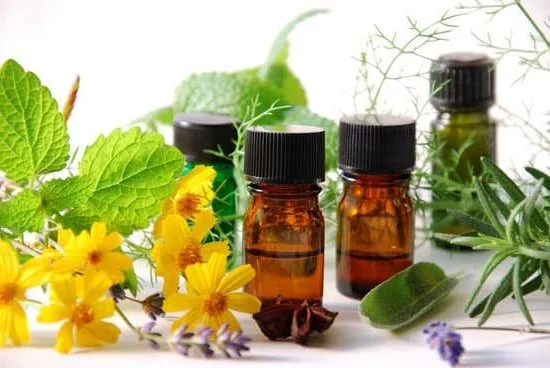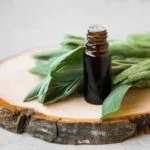Are you curious about the benefits of aromatherapy and how diffusers can enhance your experience? If so, you’re in the right place. Aromatherapy has been used for centuries to promote physical and emotional well-being, and diffusers are a popular way to enjoy its benefits.
In this article, we’ll explore the science behind aromatherapy, the different types of diffusers available, and how to determine the coverage area of a diffuser. By the end of this read, you’ll have a better understanding of how to choose the right aromatherapy diffuser for your space and needs.
Aromatherapy is the use of essential oils to improve physical and mental health. These oils are derived from plants and have been shown to have various therapeutic properties. One common way to enjoy the benefits of essential oils is through a diffuser. But how many square feet does an aromatherapy diffuser cover? This question will be answered as we delve into the factors that determine a diffuser’s coverage area.
When it comes to choosing an aromatherapy diffuser, there are several options available on the market. Each type has its unique features and benefits, so it’s important to understand what sets them apart before making a decision. Additionally, determining which size is best suited for your room or space is crucial for maximizing the effectiveness of the diffuser.
In this article, we’ll provide tips on how to choose the right size for your needs and offer guidance on using aromatherapy diffusers effectively. Stay tuned for an in-depth exploration of everything you need to know about aromatherapy diffusion.
The Science Behind Aromatherapy
Aromatherapy is a holistic healing treatment that uses natural plant extracts to promote health and well-being. The use of essential oils in aromatherapy can have various physical and emotional benefits, such as reducing stress, improving sleep, and boosting the immune system. These essential oils are typically extracted from plants via methods like steam distillation or cold-press extraction, preserving their therapeutic properties.
The science behind aromatherapy lies in the ability of essential oils to interact with the body through inhalation or topical application. When diffused into the air, the aromatic molecules of essential oils are inhaled and then stimulate the olfactory system. This sends a signal to the brain’s limbic system, which is linked to emotions, memory, and behavior. As a result, different essential oils can evoke different responses in individuals.
Additionally, essential oils can also be absorbed through the skin during massage or topical application. Once absorbed, they can travel through the bloodstream and have a direct impact on various systems within the body. For example, lavender oil is known for its calming effects when inhaled or used topically, while peppermint oil is often used for its invigorating properties. Understanding how essential oils work provides insight into how they can be used effectively for holistic wellness.
| Essential Oils | Benefits |
|---|---|
| Lavender | Calming effects, promotes relaxation |
| Peppermint | Invigorating properties, helps alleviate headaches |
| Eucalyptus | Cleansing and purifying effects on respiratory system |
Types of Aromatherapy Diffusers
Ultrasonic Diffusers
One of the most popular types of aromatherapy diffusers is the ultrasonic diffuser. This type of diffuser uses ultrasonic vibrations to create a fine mist of water and essential oils, which is then dispersed into the air. Ultrasonic diffusers are known for their ability to effectively cover large areas, making them suitable for use in living rooms, offices, and other spacious areas.
Nebulizing Diffusers
Nebulizing diffusers are another commonly used type of aromatherapy diffuser. Unlike ultrasonic diffusers, nebulizing diffusers do not require water to disperse essential oils into the air. Instead, they use pressurized air to break the oils down into fine particles that can be released as a mist. Nebulizing diffusers are known for their ability to provide a strong concentration of aroma, making them ideal for smaller rooms or areas where a more intense scent is desired.
Evaporative Diffusers
Evaporative diffusers work by allowing essential oils to evaporate into the air. These types of diffusers typically use a fan to blow air through a pad or filter that has been soaked in essential oils. As the air passes over the pad, it helps to evaporate the oil and disperse its aroma throughout the room. Evaporative diffusers are best suited for small to medium-sized rooms and are known for their simplicity and ease of use.
Understanding the differences between these various types of aromatherapy diffusers can help you choose the right one for your specific needs. Before purchasing a diffuser, consider factors such as room size, desired intensity of scent, and personal preferences in order to determine which type will best suit your needs.
By understanding how each type works and considering your own requirements, you’ll be able to make an informed decision on which aromatherapy diffuser will be most effective for enhancing your health and well-being with essential oils.
Coverage Area of Aromatherapy Diffusers
Aromatherapy diffusers are a fantastic way to enjoy the benefits of essential oils in your home or workspace. However, one common question people have when considering purchasing a diffuser is how much square footage it can cover. The coverage area of an aromatherapy diffuser is an important factor to consider, as it determines the effectiveness of dispersing the essential oils throughout a space.
Several factors come into play when determining the square footage that a aromatherapy diffuser can cover. One crucial element is the type of diffuser being used. For example, ultrasonic diffusers use water to disperse essential oils and are generally best for smaller spaces, while nebulizing diffusers are more powerful and suitable for larger areas.
Another important factor that affects the coverage area of an aromatherapy diffuser is the power and capacity of the device. Higher power diffusers with larger reservoirs can cover larger areas, while lower-power models may only be effective in small rooms or spaces.
The intensity of the aroma also plays a role in determining how many square feet an aromatherapy diffuser can cover. Some essential oils have more potent fragrances than others, affecting how far their scent can travel when dispersed by a diffuser.
| Factor | Impact on Coverage Area |
|---|---|
| Type of Diffuser | Determines suitability for different space sizes |
| Power and Capacity | Affects ability to cover larger areas |
| Intensity of Aroma | Influences how far scent can travel |
Determining the Right Size
When it comes to choosing the right aromatherapy diffuser for your room or space, it’s important to consider the coverage area of the diffuser. Different diffusers have varying capabilities in terms of how much square footage they can cover, so it’s crucial to determine the right size for your specific needs. Here are some tips on how to choose the right diffuser size for your room or space:
- Consider the size of the room: One of the main factors to consider when choosing an aromatherapy diffuser is the size of the room where you will be using it. Larger rooms will require a diffuser with a greater coverage area, while smaller rooms may only need a compact diffuser.
- Check the product specifications: When shopping for an aromatherapy diffuser, be sure to check the product specifications to see how many square feet it can cover. This information is usually provided by the manufacturer and can help you determine if the diffuser is suitable for your space.
- Think about airflow and circulation: Another important consideration is the airflow and circulation in the room. If you have a well-ventilated space with good air circulation, you may be able to use a diffuser with a slightly lower coverage area.
By taking these factors into account, you can choose an aromatherapy diffuser that is well-suited to your specific needs and space. Whether you’re looking to use essential oils for relaxation, improved sleep, or other health benefits, selecting the right diffuser size is essential for achieving optimal results.
It’s also worth noting that some modern aromatherapy diffusers come with features that allow you to adjust their coverage area, making them versatile options for different room sizes. Ultimately, finding the right diffuser size will ensure that you can fully enjoy all the benefits of aromatherapy in your home or workspace.
Best Practices for Using Aromatherapy Diffusers
Aromatherapy diffusers are wonderful tools for creating a relaxing and rejuvenating atmosphere in your home or workspace. To ensure that you get the most out of your aromatherapy experience, it is important to use your diffuser correctly and effectively. Here are some best practices for using aromatherapy diffusers:
- Choose the Right Essential Oils: Different essential oils have different properties and benefits, so it’s important to choose oils that suit your needs. For example, lavender oil is known for its calming and relaxing effects, while peppermint oil can help boost energy and mental clarity.
- Clean Your Diffuser Regularly: To maintain the effectiveness of your diffuser, be sure to clean it regularly. This helps prevent the buildup of residue from essential oils and ensures that your diffuser continues to work properly.
- Consider the Size of the Room: When using an aromatherapy diffuser, it’s important to consider the size of the room or space you are in. Different diffusers have varying coverage areas, so be sure to choose a diffuser that can adequately cover the square footage of your room.
In addition to these best practices, it’s important to follow the manufacturer’s instructions for your specific aromatherapy diffuser. By using your diffuser correctly and conscientiously, you can enjoy all the benefits that aromatherapy has to offer.
Popular Essential Oils for Aromatherapy
Lavender
One of the most popular essential oils for aromatherapy is lavender. Known for its calming and soothing properties, lavender oil is often used to promote relaxation and reduce anxiety. When used with a diffuser, the gentle scent of lavender can create a peaceful and tranquil environment, making it perfect for use in bedrooms or spaces where you want to unwind and de-stress.
Peppermint
Peppermint essential oil is another favorite for aromatherapy diffusers due to its invigorating and energizing effects. The refreshing scent of peppermint can help improve focus, boost energy levels, and alleviate symptoms of congestion or headaches. By using a diffuser with peppermint oil, you can create an uplifting atmosphere in your home office or workspace.
Lemon
Lemon essential oil is renowned for its bright and citrusy aroma that can uplift the mood and promote mental clarity. When used with a diffuser, lemon oil can help purify the air while creating a fresh and clean ambiance. It’s an excellent choice for kitchens, living rooms, or any area where you want to enhance the sense of cleanliness and well-being.
These are just a few examples of popular essential oils for aromatherapy diffusers, each offering unique benefits for health and wellness. Experimenting with different oils can help you find the perfect scent to suit your needs and preferences while enjoying the therapeutic effects of aromatherapy.
Conclusion
In conclusion, aromatherapy diffusers are a wonderful addition to any space, providing numerous health and wellness benefits through the use of essential oils. As discussed in this article, the science behind aromatherapy is fascinating, and diffusers play a vital role in dispersing these beneficial oils into the air. With different types of diffusers available, individuals have the opportunity to choose one that best suits their preferences and needs.
When it comes to determining the coverage area of aromatherapy diffusers, several factors come into play, such as the type of diffuser, the size of the room or space, and the strength of the essential oils being used. It’s important to consider these factors when selecting a diffuser to ensure that it covers an adequate square footage for maximum effectiveness.
As more people seek natural remedies for health and wellness, aromatherapy with a diffuser has become increasingly popular. By incorporating essential oils like lavender, peppermint, or eucalyptus into their daily routines, individuals can experience a range of benefits including stress relief, improved sleep, enhanced mood, and more.
We encourage readers to explore the world of aromatherapy and try using a diffuser for their own health and wellness journey. With proper knowledge and understanding of how diffusers work, anyone can enjoy the many advantages that aromatherapy has to offer.
Frequently Asked Questions
What Diffuser Covers the Most Area?
The diffuser that covers the most area is typically the ultrasonic diffuser. This type of diffuser uses water and essential oils to create a fine mist that can spread throughout a large room, covering a significant amount of space.
How Many Square Feet Does a Reed Diffuser Cover?
A reed diffuser typically covers a smaller area compared to other types of diffusers. On average, a reed diffuser can cover about 100 square feet. It’s important to consider the size of the room when choosing a reed diffuser to ensure proper coverage.
What Size Essential Oil Diffuser Do I Need?
When determining the size of essential oil diffuser you need, it’s important to consider the square footage of the space where you’ll be using it. For a small room or office, a compact diffuser may suffice, while larger living areas may require a more powerful and larger capacity diffuser to effectively disperse the essential oils.

Are you looking for a natural way to improve your health and wellbeing?
If so, aromatherapy may be the answer for you.





